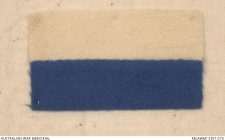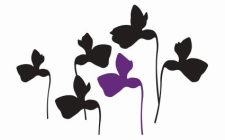
10th Battalion
The 10th Battalion was among the first infantry units raised for the AIF during the First World War. The battalion was recruited in South Australia, and together with the 9th, 11th and 12th Battalions, formed the 3rd Brigade. The battalion was raised within weeks of the declaration of war in August 1914 and embarked for overseas just two months later. After a brief stop in Albany, Western Australia, the battalion proceeded to Egypt, arriving in early December.
12th Battalion
The 12th Battalion was among the first infantry units raised for the AIF during the First World War. Half of the battalion was recruited in Tasmania, a quarter was recruited in South Australia, and a quarter from Western Australia. With the 9th, 10th and 11th Battalions it formed the 3rd Brigade. The battalion was raised within three weeks of the declaration of war in August 1914 and embarked just two months later. After a brief stop in Albany, Western Australia, the battalion proceeded to Egypt, arriving in early December.
3rd Light Horse Regiment
The 3rd Light Horse Regiment was raised in Adelaide on 17 August 1914. Although most of its recruits were enlisted in South Australia, one of the regiment’s three squadrons was composed of Tasmanians and was raised and trained in Hobart. The two components sailed from their home ports in late October 1914 and arrived in Egypt in the second week of December. Here, they joined the 1st and 2nd Regiments to form the 1st Light Horse Brigade.
50th Battalion
The 50th Battalion was raised in Egypt on 26 February 1916 as part of the "doubling" of the AIF. Approximately half of its recruits were veterans from the 10th Battalion, and the other half, fresh reinforcements from Australia. Reflecting the composition of the 10th, the 50th was predominantly composed of men from South Australia. The battalion became part of the 13th Brigade of the 4th Australian Division and was dubbed "Hurcombe's Hungry Half Hundred", after its first CO, Lieutenant Colonel Frederick Hurcombe. (information courtesy of the Australian War Memorial)
Advertiser
The Advertiser was founded in 1858. Between 1893 and 1929,Sir John Langdon Bonython was its sole proprietor. He also held the post of editor for 45 years, and under his direction the Advertiser became a prominent Australian daily newspaper. It appealed to the growing middle class and was proudly South Australian, although Bonython was determined that its coverage should be as complete as possible. The newspaper prospered, partly thanks to the prominence given to small advertisements. Bonython had been an advocate for Federation, and promoted the cause through his newspaper. Indeed, he represented South Australia in the Federal Parliament for several years from 1901 as a Protectionist. Bonython was also a noted philanthropist, giving significant sums of money to educational institutions, and to the needy during hard times. He also gave a large sum of money towards the completion of Parliament House in Adelaide.
Cheer-Up Society
The South Australian Cheer-Up Society was founded by Alexandrina Seager. Its object was to support the soldiers as well as to bring them into contact with the 'highest type of womanhood'. They visited the soldiers at camp before they embarked for the trenches and provided them with supper, concerts and conversation.
I ANZAC Corps
I ANZAC Corps was formed in Egypt in February 1916 as part of the expansion of the Australian Imperial Force and the New Zealand Expeditionary Force. Along with II ANZAC Corps, it replaced the original Australian and New Zealand Army Corps.
Red Cross
Australian branches of the Red Cross formed in 1914 within days of the outbreak of the war. They were all branches of the British Red Cross Society, reflecting the close bonds with the ‘Mother Country’. Lady Helen Munro Ferguson, the wife of Australia's Governor General, established the Red Cross in Melbourne, and encouraged state governors' wives to do the same. In South Australia, Lady Marie Carola Galway convened the inaugural meeting at Adelaide Town Hall on 14 August, 1914. Thousands of South Australians, predominantly women, joined the ranks of the Red Cross, raising funds to support the soldiers and putting traditional skills to use, knitting, sewing and baking for the war effort. Branches sprang up all around the state, based on suburbs, towns, religious congregations and workplaces. Later in the war the Red Cross opened an Information Bureau to help families search for missing soldiers.
South Australian Red Cross Information Bureau
The South Australian Information Bureau was formally established in December 1915 and opened its doors for business on 6 January 1916 in the newly built Verco Buildings on North Terrace. South Australians were invited to write or call at the Bureau, open to the public between 2.30 and 5pm. The Red Cross networks provided opportunities for desperate relatives to inquire after loved ones. When an inquiry was received, either by letter or personal visit, a card was opened ‘and carefully filed in packet form under an index also noted on the cards. This packet would contain a complete record of every step taken, and all information obtained relative to the particular soldier. As information was received, it was forwarded to the enquirer. All the work was undertaken by volunteers. The Bureau operated thanks to the efforts of solicitors (all male, except for one – Mrs Napier) and a team of women, who undertook clerical duties. With the mornings full with the vast array of administrative and organisational tasks undertaken by Bureau volunteers, personal interviews with concerned inquirers were held each afternoon with legal representatives. The archives of the South Australian Red Cross Information Bureau are held by the State Library of South Australia, and can be accessed online: https://sarcib.ww1.collections.slsa.sa.gov.au/

